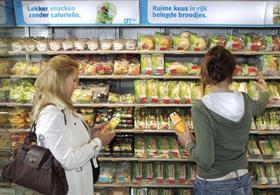
Only one in three shoppers use their nearest supermarket for primary food supply, according to new research.
The study, published online in the American Journal of Public Health, found that fruit and vegetable consumption was not associated with physical distance but instead shoppers prioritise supermarket choice.
It concluded that studies on food environments need to focus beyond geographic boundaries to capture actual food shopping behaviors.
'Clearly, people tend to bypass a multitude of supermarkets, grocery and ethnic stores near their homes to get to their primary supermarket of choice,' said lead author Anju Aggarwal, from the University of Washington's Center for Obesity Research.
Choices on where people shopped were likely to be based on individual factors ranging from economic necessity to lifestyle, culture and attitudes about healthy foods, she added.
Researchers from various academic institutions, including University of Washington and Cornell University, examined whether supermarket choice, taken as a symbol for underlying personal factors, would better predict access to supermarkets and fruit and vegetable consumption than physical proximity.
Data on fresh produce consumption was obtained through telephone interviews, and researchers used qualitative analyses to examine whether supermarket choice outweighed physical proximity among lower-income groups.
The study was based on responses from nearly 1,400 supermarket shoppers in the area around US city of Seattle, as well as the 2008-2009 Seattle Obesity Study.



